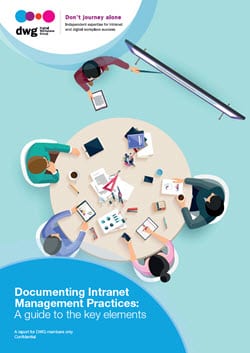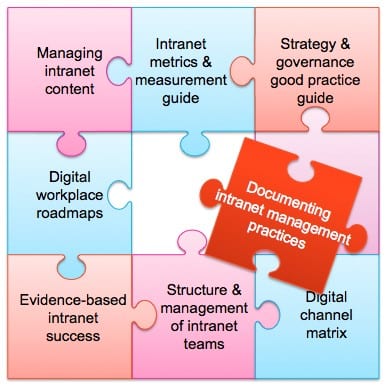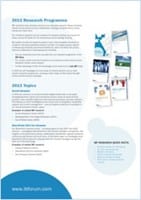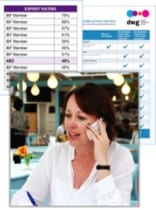Documenting intranet management practices: A guide to the key elements
 One thing that hasn’t changed at all in the intranet industry (while a whole lot of things have!) is that people always love to see screenshares of other organizations’ intranets. Nothing beats that insider insight into what successful organizations are doing well – and what they’ve learned along the way.
One thing that hasn’t changed at all in the intranet industry (while a whole lot of things have!) is that people always love to see screenshares of other organizations’ intranets. Nothing beats that insider insight into what successful organizations are doing well – and what they’ve learned along the way.
Numerous times, I’ve seen the impact of live tours and homepage galleries at DWG member meetings, or during “What does good look like?” presentations to consulting clients. However, I always add the caveat: Your intranet will be unique to your organization. It’s not about getting a blueprint – but it is about getting ideas and inspiration to inform your own practice and opening people’s eyes to what’s possible.
So, screenshares are always in demand. Sometimes we are asked questions like “What should our strategy look like?”, “Is there a template we can follow?” and “Where should we start with formalizing the way we manage the intranet?”. There are no simple answers. As with the look and feel or functionality of the intranet, the style of the strategy or governance will be unique to each organization and form part of a wider process of user research and stakeholder engagement. Nevertheless, there are key elements and best practice approaches that can be drawn out.
DWG’s new research “Documenting intranet management practices: A guide to the key elements” brings together guidance on how to approach formalizing intranet strategy, governance, roadmap, content strategy and supporting strategies. In researching this paper, I was able to gain insider insight from organizations such as Nationwide, Adobe, IKEA, Northwestern Mutual and Duke Energy to understand best practice in the field.
Building strong foundations
If intranet management was as straightforward as following a template, everyone would be doing it. This is far from the case, as we know from DWG benchmarking, where documenting strategy continues to be a relatively weak area, with at least 30% of the recommendations given by our strategy and governance benchmarkers relating to this.
Yet, recent DWG research demonstrates how critical good intranet management practices are to the success of the intranet. The purpose of this new research is to help intranet managers who are looking to improve in this area by outlining the key elements of core intranet management documents, as a starting point to developing their own.
As I note in the executive summary, an intranet strategy (or other intranet management) document – no matter how carefully put together – does not exist in a vacuum. It is one element in the process of managing the intranet and needs to be developed through an interactive process with a range of inputs and stakeholder engagement along the way. This report therefore represents one piece in a jigsaw of DWG research reports that together provide a comprehensive guidebook on intranet management practices:

Over to you
So where are you at with formalizing your intranet management practices?
If you’ve already done this, what difference has it made?
If not, what barriers or challenges have you experienced?
We’d love to hear from you, so do drop to the comments below to join the discussion.
Related resources
- What is the first step towards evidence-based intranet success?
- DWG sheds light on good practices for robust intranet strategy and governance
- Free summary: ‘Digital workplace roadmaps: From strategy to implementation’
- Free summary: ‘Managing intranet content: A good practice guide’
Cost
This report is included in DWG’s annual membership. If you are already a member, download the full report on the DWG extranet.
Find out more
If our member research has sparked your interest, contact us to explore becoming a DWG member. We will gladly help you understand which options will best meet your needs and budget.
Related research and resources
Learn About Membership
Categorised in: Intranets


